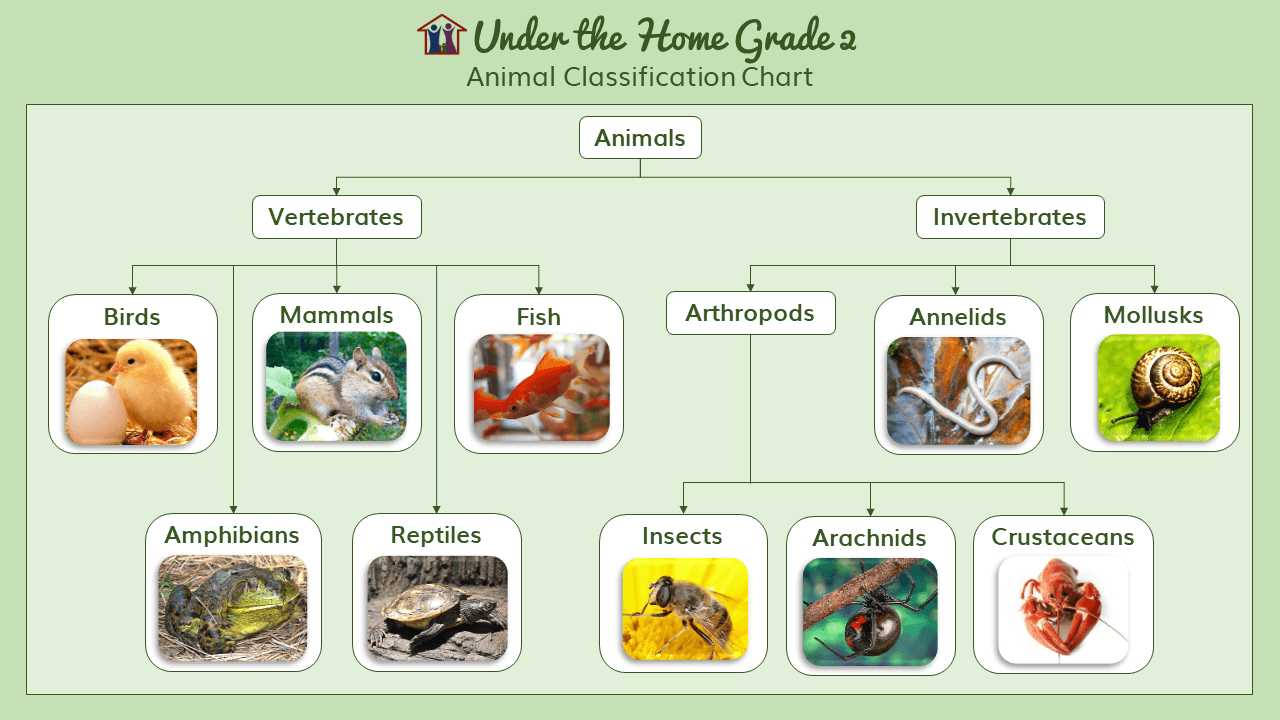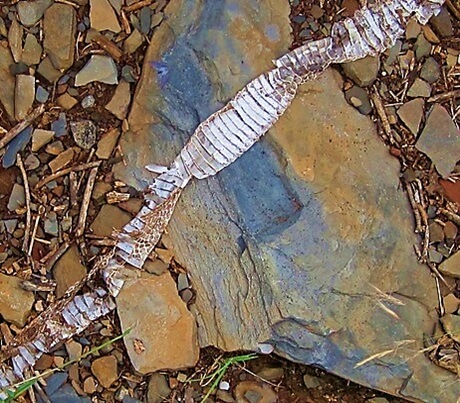Lesson 32: The Snake
Performer: LibriVox - Bellona Times
'Why Mr. Snake Cannot Wink' from Mother West Wind Why Stories by Thornton W. Burgess
Peter Rabbit and Johnny Chuck were playing tag on the Green Meadows. Of course Peter can run so much faster than Johnny Chuck that he would never have been "it" if he had tried his best to keep out of the way. But he didn't. No, Sir, Peter Rabbit didn't do anything of the kind. He pretended that one of his long hind-legs was lame so that he had to run on three legs, while Johnny Chuck could use all four. It was great fun. They raced and dodged and twisted and turned. Sometimes Peter was so excited that he would forget and use all four legs. Then Johnny Chuck would shout "No fair!" Peter would say that he didn't mean to, and to make up for it would be "it" and try to catch Johnny.
Now it happened that curled up on a little grassy tussock, taking an early morning sun-bath, lay little Mr. Greensnake. Of course Peter Rabbit and Johnny Chuck were not afraid of him. If it had been Mr. Rattlesnake or Mr. Gophersnake, it would have been different. But from little Mr. Greensnake there was nothing to fear, and sometimes, just for fun, Peter would jump right over him. When he did that, Peter always winked good-naturedly. But Mr. Greensnake never winked back. Instead he would raise his head, run his tongue out at Peter, and hiss in what he tried to make a very fierce and angry manner. Then Peter would laugh and wink at him again. But never once did Mr. Greensnake wink back.
Peter was thinking of this as he and Johnny Chuck stretched out in a sunny spot to get their breath and rest. He had never thought of it before, but now that he had noticed it, he couldn't remember that he ever had seen little Mr. Greensnake wink, nor any of Mr. Greensnake's relatives. He mentioned the matter to Johnny Chuck.
"That's so," replied Johnny thoughtfully. "I never have seen any of them wink, either. Do you suppose they can wink?"
"Let's go ask Mr. Greensnake," said Peter.
Up they hopped and raced over to the grassy tussock where Mr. Greensnake lay, but to all their questions he would make no reply save to run out his tongue at them. Finally they gave up asking him.
"I tell you what, let's go over to the Smiling Pool and ask Grandfather Frog. He'll be sure to know, and perhaps, if he is feeling good, he'll tell us a story," said Peter.
So off they scampered to the Smiling Pool. There they found Grandfather Frog sitting on his big green lily-pad just as usual, and Peter knew by the look in his great, goggly eyes that Grandfather Frog had a good breakfast of foolish green flies tucked away inside his white and yellow waistcoat. His eyes twinkled as Peter and Johnny very politely wished him good morning.
"Good morning," said he gruffly.
But Peter had seen that twinkle in his eyes and knew that Grandfather Frog was feeling good-natured in spite of his gruff greeting.
"If you please, Grandfather Frog, why doesn't Mr. Greensnake wink at us when we wink at him?" he asked.
"Chug-a-rum! Because he can't," replied Grandfather Frog.
"Can't!" cried Peter Rabbit and Johnny Chuck together.
"That's what I said--can't," replied Grandfather Frog. "And no more can Mr. Blacksnake, or Mr. Rattlesnake, or Mr. Gophersnake, or any other member of the Snake family."
"Why not?" cried Peter and Johnny, all in the same breath.
"Chug-a-rum!" said Grandfather Frog, folding his hands across his white and yellow waistcoat, "if you will sit still until I finish, I'll tell you; but if you move or ask any foolish questions, I'll stop right where I am, and you'll never hear the end of the story, for no one else knows it."
Of course Peter and Johnny promised to sit perfectly still and not say a word. After they had made themselves comfortable, Grandfather Frog cleared his throat as if to begin, but for a long time he didn't say a word. Once Peter opened his mouth to ask why, but remembered in time and closed it again without making a sound.
At last Grandfather Frog cleared his throat once more, and with a far-away look in his great, goggly eyes began:
"Once upon a time, long, long ago, when the world was young, lived old Mr. Snake, the grandfather a thousand times removed of little Mr. Greensnake and all the other Snakes whom you know. Of course he wasn't old then. He was young and spry and smart, was Mr. Snake. Now there is such a thing as being too smart. That was the trouble with Mr. Snake. Yes, Sir, that was the trouble with Mr. Snake. He was so smart that he soon found out that he was the smartest of all the meadow and forest people, and that was a bad thing. It certainly was a very bad thing." Grandfather Frog shook his head gravely.
"You see," he continued, "as soon as he found that out, he began to take advantage of his neighbors and cheat them, but he would do it smoothly that they never once suspected that they were being cheated. Mr. Snake would go about all day cheating everybody he met. At night he would go home and chuckle over his smartness. It wasn't long before he began to look down on his neighbors for being so honest that they didn't suspect other people of being dishonest, and for being so easily cheated.
"Now one bad habit almost always leads to another. From cheating, Mr. Snake just naturally slipped to stealing. Yes, Sir, he became a thief. Of course that made trouble right away, but still no one suspected Mr. Snake. He was always very polite to everyone and always offering to do favors for his neighbors. In fact, Mr. Snake was very well liked and much respected. When anyone had been robbed, he was always the first to offer sympathy and join in the hunt for the thief. He was so spry and slim, and could slip through the tall grass so fast, that he could go almost where he pleased without being seen, and this made him very bold. If he did happen to be found near the scene of trouble, he always had a story ready to account for his presence, and it sounded so true, and he told it in such an honest manner, that no one thought of doubting it.
"So Mr. Snake found that lying helped him to cheat and steal, and all the time he kept thinking how smart he was. But even Mr. Snake had a little bit of conscience, and once in awhile it would trouble him. So what do you think he did? Why, cheating had become such a habit with him that he actually tried to cheat himself--to cheat his conscience! When he was telling a lie, he would wink one eye. 'That,' said he to himself, 'means that it isn't true, and if these folks are not smart enough to see me wink and know what it means, it is their own fault if they believe what I am telling them.' But always he took care to wink the eye that was turned away from the one he was talking to.
"Dear me, dear me, such terrible times as there were on the Green Meadows and in the Green Forest! They grew worse and worse, and when at last Old Mother Nature came to see how all the little people were getting along, she heard so many complaints that she hardly knew where to begin to straighten matters out. She had all the little people come before her in turn and tell their troubles. When it came Mr. Snake's turn, he had no complaint to make. He seemed to be the only one who had no troubles. She asked him a great many questions, and for each one he had a ready reply. Of course a great many of these replies were lies, and every time he told one of these, he winked without knowing it. You see, it had become a habit.
"Now, with all his smartness, Mr. Snake had forgotten one thing, one very important thing. It was this: You can't fool Old Mother Nature, and it is of no use to try. He hadn't been talking three minutes before she knew who was at the bottom of all the trouble. She let him finish, then called all the others about her and told them who had made all the trouble. Mr. Snake was very bold. He held his head very high in the air and pretended not to care. When Old Mother Nature turned her head, he even ran out his tongue at her, just as all the Snake family do at you and me today. When she had finished telling them how cheating and stealing and lying isn't smart at all, but very, very dreadful, she turned to Mr. Snake and said:
"'From this time on, no one will believe anything you say, and you shall have no friends. You will never wink again, for you and your children and your children's children forever will have no eyelids, that all the world may know that those who make a wrong use of the things given them shall have them taken away.'
"And now you know why little Mr. Greensnake cannot wink at you; he hasn't any eyelids to wink with" finished Grandfather Frog.
Peter Rabbit drew a long breath. "Thank you, oh, thank you ever so much, Grandfather Frog," he said. "Will you tell us next time why Bobby Coon wears rings on his tail?"
"Perhaps," replied Grandfather Frog.



